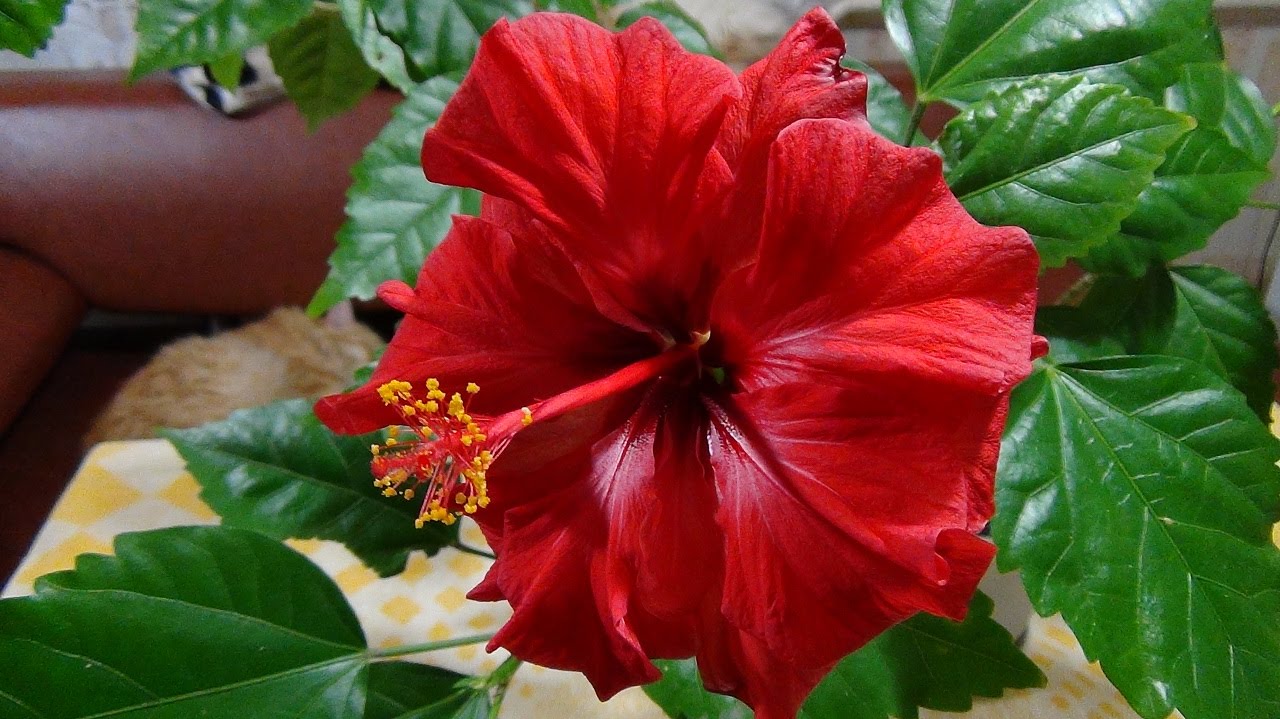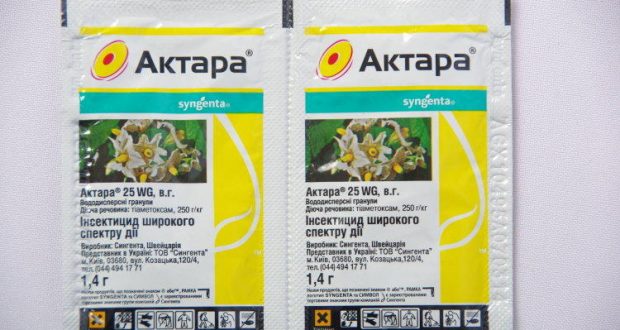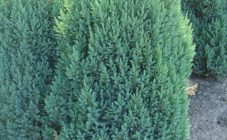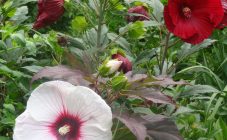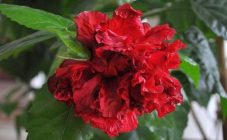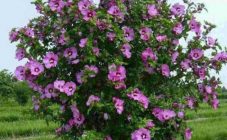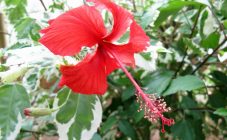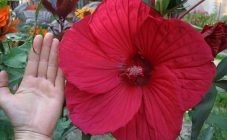Content:
Plants of the Malvov family are of interest as decorative crops and have practical applications. Chinese hibiscus - the most common in home cultivation, are loved by flower growers for their unpretentiousness and charming appearance.
Description of the genus Hibiscus
Hibiscus, of which there are about 300 species - tropical plants, deciduous or evergreen, tree-like, shrub or herbaceous forms, annuals and perennials. They are united by magnificent flowering - flower sizes vary from 5 to 20 cm in diameter, the variety of colors can be briefly described as the absence of black and blue.
In the natural environment on the territory of the Russian Federation, there are two types:
- Syrian, wintering outdoors in the south (Crimea, North Caucasus);
- northern, inhabiting the territory of Western Europe and the southern end of the Crimean Peninsula.
At home, they usually grow Chinese hibiscus, or Chinese rose and other types:
- hybrid hibiscus;
- swamp;
- dissected-leaved;
- Hawaiian;
- musky;
- red-leaved (maple-leaved);
- royal;
- volatile;
- hibiscus Drummond, etc.
Chinese rose - description, varieties
Chinese hibiscus originally from the countries of Southeast Asia, first appeared in Russia in the 18th century. roundabout through Europe. An evergreen tree in its natural environment grows up to 3.5 m, and at home it is limited to a height of 1.5 m. Leaves of a rich dark green color, glossy, oval, with denticles at the edges. The tree enlivens the interior by itself, but especially decorative during flowering. Corolla sizes reach 15-16 cm in diameter, are colored with warm tones - from yellow to red, with a pleasant aroma. Each flower blooms for up to two days, but with proper care, the hibiscus flower will bloom all year round.
For convenience, numerous varieties are divided into groups:
- Yellow hibiscus and peach - Kyoto yellow, Ay of Kali, Ankara.
- Red, pink and orange - Tivoli, Torino, Porto, Big Tango, Carmen Keene, Athens.
- White hibiscus - San Remo, Borias.
- Variegated - Parple Majestic.
- Terry - Lady Stanley - white terry hibiscus, Hamburg - red terry.
- Particularly popular are dwarf hybrids, up to 50 cm high, easily placed in a confined space.
Planting instructions
You can plant hibiscus at home in a vegetative way, taking a stalk of your favorite exotic plant from friends, or generatively - sowing seeds from a manufacturer with a good reputation.
Cuttings
The method is good for its availability at any time of the year, butspring or summer branches cut from an adult healthy plant have the best survival rate:
- cuttings size 7-10 cm with 3-4 internodes;
- the bottom pair of leaves is torn off;
- rooted in a glass of water or directly in a nutrient substrate.
Seed method
The best time is the last days of winter or early spring. Seeding Algorithm:
- The seeds are soaked for a day with water with the addition of stimulants - Epin, Zircon, etc .;
- Spread on a damp cloth, packed in a bag;
- After 2-3 days, tiny roots-strings will appear, the seeds are laid out on the surface of the nutrient substrate, watered, make a greenhouse;
- After 10-12 days, shoots appear, the greenhouse is removed;
- Seedlings are planted in a couple of months.
Hibiscus flower home care
Rosan needs:
- Lighting - bright diffused, in the south in the middle of the day shading is required. Northern windows are suitable for decorative deciduous varieties;
- Ventilation - so that the flower is not overcome by fungal infections;
- Room temperature, drafts are not allowed. In winter, the flower needs coolness - 16-18 ° C;
- Air humidity increased. The plant is sprayed or sown with moss daily. It is allowed to place small open containers of water near the pot;
- The soil is loose, with good permeability, slightly acidic - pH 6.8. In the purchased soil, if it is not intended for hibiscus, add leaf humus, sand or vermiculite. Ideal composition: sod and leafy soil with humus (1: 1: 1), where baking powder is added.
How to care
First, watering with water at room temperature. The earthy ball must be completely moistened. The need for watering is determined by the dried upper layer of the substrate.
Secondly, top dressing - monthly, with mineral complexes with a low nitrogen content to stimulate flowering.
Also, do not forget that plants are pruned in early spring and after each flowering wave. At the turn of February-March, bushes are formed, shortening all shoots by 2-3 cm. After flowering, the shoot that gave the flower is cut to stimulate the growth of new branches and the formation of buds. Tops and processes directed inward to the crown are regularly cut out.
Transfer is carried out only after the roots fill the entire pot. Very young seedlings can be replanted annually after wintering.
Reproduction
Reproduction is generative, by seeds, and vegetative - by cuttings, layering, dividing an adult plant. Less commonly, it is propagated by grafting the varieties you like on the existing plant.
Diseases and pests
Domestic hibiscus are affected by the scabbard, spider mite. Aktara helps to get rid of the first, with which leaves and stems are treated and the soil is shed. To combat the tick, the potent acaricides Oberon, Neoron are used.
Why do the leaves turn yellow, plaque appears on the branches and leaves - the tree is sick. The cause of the disease is poor watering and nutrition: chlorosis, vascular wilting, root rot. For the treatment of chlorosis, they are fed with chelates on the leaf, in other cases, a transplant with a complete replacement of the soil is required.
Hibiscus in the landscape
For the design of summer cottages, garden frost-resistant and annual species are used. They are used to decorate hedges, frame borders, ponds, and are planted as tapeworms or an addition to decorative deciduous shrubs. Large-flowered hibiscus looks great when surrounded by medium and ground cover plants.
There are many signs associated with the Chinese hibiscus rose, often contradicting each other. In China, for example, it is considered the flower of death, and in Hawaii - a symbol of love and femininity.
Growing, caring for a home hibiscus flower and its reproduction does not require much effort from an amateur grower. This is such a simple matter that a child can handle it without being burdened with additional knowledge.
